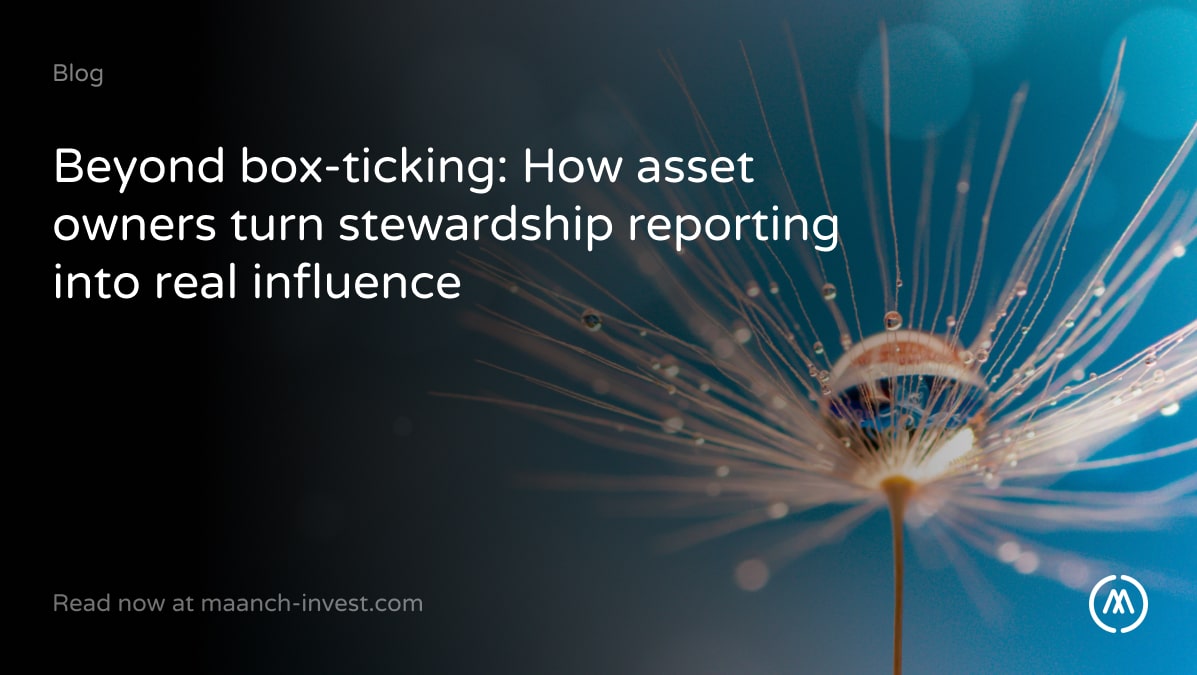Much like an entrepreneurial business, philanthropy is a journey of testing, learning and adapting. Whilst journeys are very different for different people, there are some common pitfalls and best practices which will help anyone wanting to give effectively. After all, philanthropy is not a new thing – it’s been around for centuries.
Invited to give a lecture at the University of Geneva, David Stead of Maanch discusses how to utilise effective giving to make a real and sustained difference. He considers the challenges of philanthropy- especially family philanthropy- and how best to navigate these to ensure that you make the greatest impact where it is most important, both to you personally and to the world at large. He also addresses the issue of high net worth individuals (HNWI); why they don’t give more and where action can be taken to resolve this.
Here is a transcript of David’s lecture:
How do you decide where to begin when it comes to philanthropy?
The starting point for a would-be philanthropist is some personal reflection. Take a step back and ask yourself some key questions. After all, this is important work. The investment of time- and possibly some money to fund expert advice or research- is worth it.
Is this a personal journey, or do you want to involve your family, friends or others?
Involving children in discussions about giving early on helps them to understand the value and responsibility of wealth, and the difference it can make to those in more need than themselves. It can help start enjoyable and meaningful conversations about what’s really important to you, your family members and society as a whole.
Despite the great opportunities wealth brings, this responsibility can be a real concern. It can actually create an acute sense of insecurity, especially without the necessary preparation. How do you live up to expectations and avoid mistakes? Nobody wants to be the generation that loses the family wealth or gives it away unwisely or with repetitional damage.
Communication is critical. Families often avoid talking about passing on their wealth due to embarrassment or concerns about conflict. But discussing values, hopes and fears openly and honestly, while developing a shared plan for the future, can bring families closer together.
Equally critical is trust; although sadly this is often lacking. This can be built up via planning and good open communication from an early stage.
That’s why it’s important to be prepared – for example, creating a good succession plan. Created with the family, it can help ensure that wealth is passed on and given away responsibly.
It involves applying family values to wealth, helping the next generation to assume responsibility and getting the right blend of investment and giving in place to match long term objectives. In contrast, a philanthropy plan written without including the children, with many detailed clauses about who to give to and how, may be seen as imposing the values and priorities of the previous generation. This may demotivate successors from getting properly involved.
Are you already passionate about a specific cause, and know the difference you’d like to make, or are you more open to the many causes out there?
If you’re not sure, then philanthropy advisers can help flesh out a plan for you, based on your values, narrowing down your aims by cause, geography and type of support. Or you can discuss it with others, such as friends and colleagues, who share your interest in giving. Cause-related networks are one way to bring like-minded donors together to learn and collaborate about addressing a social or environmental problem.
Would you rather be more scientific in your approach and start with what’s needed most, or would you rather start with your own preferences?
You don’t need Bill Gates’ billions to follow his basic steps to help identify where and how to do the most good – to get the biggest bang for your buck. Look in-depth at an area, talk to a diverse group of experts, and try to work out where your funds would make the greatest difference. Often this leads people to fund international causes because not only is the scale of need so huge but also, and this gets a little controversial, the cost of a life saved in poorer countries is much less than the UK; meaning more lives can be saved or improved for each £100 donated.
The Global Goals provide a useful blueprint to help you consider the world’s biggest problems in a practical way. These are the 17 Sustainable Development Goals set in 2015 to achieve a better and more sustainable future for all by 2030. The world’s to-do list. There is a huge amount of data under each goal and you can see what’s being funded and what isn’t.
Once you have some idea of your focus, and be careful about “paralysis by analysis” as there is no “right answer”, there are a number of good lending principles to follow:
- Consider funding a charity’s core costs not just programmes of work. Enterprises with a social purpose need effective people, systems and infrastructure (like a business) to be self-sustaining and get more efficient at what they do. For example, paying for a fund-raiser for 3 years may have much more impact than putting that money into a single project. This is also called “unrestricted funding” and gives the charity more flexibility over its use.
- Think in years not in months. Ideally you want to find a balance which allows the charity to plan ahead with some certainty over a few years but doesn’t make the charity over-dependent on your funding. Build up a sense of when the right time to exit may be, but ensure you communicate with the charity so as not to leave them without any alternatives.
- Consider what you can offer in addition to funding. This could be access to other donors like you, to your skills and experience, or to useful networks and organisations. Becoming a Trustee or adviser can also help enormously. That said, I’d be wary of a general offer of volunteering. Often charities don’t have the time to make that work; meaning this can cause bigger problems than it solves.
- Finally, don’t jump into setting up your own charity or foundation unless you are sure there is a real gap in the area you want to support. It’s far better to investigate what’s already out there, what’s already working well and fund more of that work to achieve greater scale than set up yet another organisation which competes for resources amongst nearly 170,000 charities in the UK.
Following the above principles will help you avoid the common pitfalls and give you more chances of making a bigger difference over time. They are a counter to the ego-led, random, reactive, one-off and “over-complicated’ giving we still see. Following these principles will help ensure that good intentions translate into positive outcomes.
So why don’t the rich give more? What are the barriers to more giving?
Charities often expect that HNWIs will make more ‘major’ donations given their personal wealth, or that there will at least be a positive correlation between their increase in net worth and the increase in the amount donated.
However, this is not the case. Many individuals do not increase their donations in proportion with their wealth and, in some cases, they cease making donations altogether (or never even start).
There are a multitude of reasons why HNWIs do not donate, or do not donate more, but some are more significant than others:
- These individuals have other financial priorities and obligations that take precedence over making larger donations. Don’t underestimate how insecure wealthy people are about their finances – especially new wealth which they are always worried about losing! The real question is, “how wealthy do they feel?” There’s a lot of psychology going on.
- Lack of control on how a donation is used is another major barrier; especially for people like business owners who are very used to being in control. Connected to this is lack of faith in charities and how they are run, not helped by extensive media coverage of those charities that are badly governed.
- Many see it as the responsibility of others to provide this funding; whether this be the state or individuals who are wealthier than they are.
The impact of these barriers differs. Some are critical, acting as ‘donation blockers’ that either prevent any donations at all, or prevent larger donations. Others are less permanent, and can be changed or overcome. For example, charities building better relationships with high net worth potential donors can help overcome a lack of trust or desire for control.
Looking for guidance on your philanthropic objectives? Get in touch with us here. Subscribe to Maanch for more updates.
Learn more about David Stead here.



